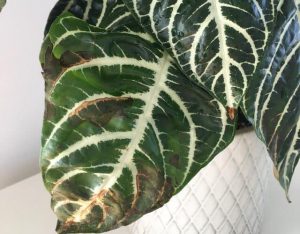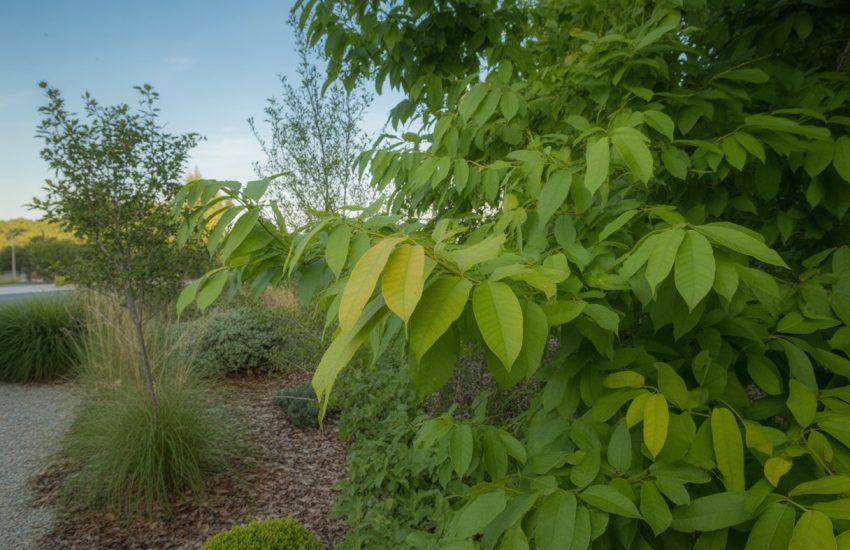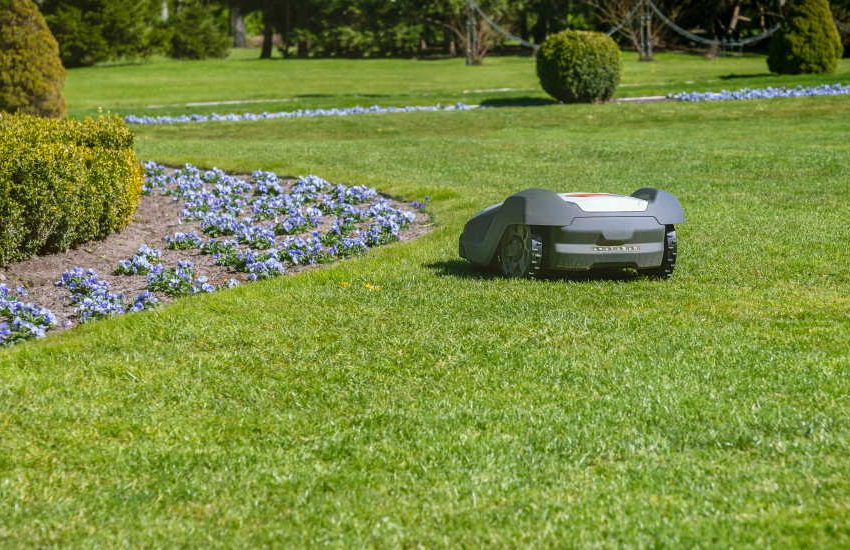9 Causes And Solutions To Zebra Plant Leaves Turning Brown
The botanical name of a zebra plant is “Aphelandra squarrosa”. This tropical plant has striking leaves and normally produces large, colorful flowers. A zebra plant should not be confused with “Calathea zebrina” whose common name is also “Zebra Plant”.
Although Aphelandra squarrosa is a tropical species, which is native to Brazil, you can still own it and admire its beauty. That is because this stunning plant grows nicely in an indoor setting. All you need to do is maintain the right level of humidity and other conditions.

In case you fail to do this, the leaves of your zebra plant might start to turn brown.
In this article, we talk about the possible causes of zebra plant leaves turning brown. Furthermore, we go the extra mile to provide you with solutions to these problems.
9 Possible Causes Of Zebra Plant Leaves Turning Brown
- Under-watering
A zebra plant is a succulent plant; meaning both under-watering and over-watering can have devastating effects on its health. Under-watering leaves the root area of the plant dry since water only reaches the topsoil.This, in turn, leaves the plant with insufficient water to carry out its photosynthetic process. And, without proper photosynthesis taking place, the leaves of your zebra plant will start to turn brown.
Solution
Assuming you are growing your zebra plant in a pot; you should consider watering it once every couple of weeks. What’s more, you should be keen on deep watering the plant in case the soil is completely dry.Another thing; the amount of water zebra plants need varies from season to season. That being said, in summer, you will have to keep the soil moist. This ensures the soil has enough water for the plant to use.
During winter, zebra plants do not use much water since their growth rate reduces a bit. Needless to say, you will not have to water it as frequently as you do in summer. All you have to focus on is making sure the soil never dries off completely.
- Exposure To Direct Sunlight
Succulent plants hate direct sunlight since it causes excessive transpiration. Excessive transpiration, in turn, leads to the scorching of leaves, thereby, making them turn brown.Solutions
The solution to this problem is to simply move your zebra plant away from direct sunlight. Once you do that, the leaves of your plant will start to recover.Since southern windows experience the brightest exposure to sunlight, it is always advisable that you move your plant to northern windows. These windows experience sufficient light that will keep your plant in good condition without leaving the leaves scorched.
If you love having your zebra plant outdoors, you should consider moving it to a shaded place. This includes under a tree canopy, near a fence, or under a porch. Alternatively, you can place your zebra plant in a greenhouse. Here, there are favorable conditions the plant needs to thrive.
- Unsuitable Potting Soil That Repels Water
Another reason why the leaves of your zebra plant are turning brown might be due to the health of the soil the plant is growing from. A low amount of organic matter leads to hydrophobic soil. Unlike healthy soil, which has good moisture retention, hydrophobic soil has a waxy residue on its top layer.This waxy residue normally prevents water from seeping in. And with insufficient water in the soil, the leaves of your zebra plant will gradually start to turn brown.
Solutions
There are 3 comprehensive solutions to this issue. They include:
• Mulching
• Using a wetting agent
• Introducing MycorrhizaeMulching
You can improve the fertility of the soil your zebra plant is growing from through mulching. Mulching also helps retain moisture. It is basically a layer of material that you apply to the topsoil.These materials are mostly organic. They range from hay, straw, wood chips, and pine bark to manure and compost.
Organic materials are highly recommended since they provide much-needed nutrients to the plant. But if for some reason, you cannot get them, you should consider pebbles, gravels, marbles, or pecan shells.Using A Wetting Agent
A wetting agent is a quick solution for hydrophobic soil. It helps improve moisture retention as well as the water retention capacity of the soil. In so doing, a wetting agent helps increase the chances of your zebra plant surviving tougher conditions.You can create a wetting agent from scratch, and it is easy. All you need is laundry water or diluted dishwashing liquid. When making a wetting agent, you should only settle on eco-friendly and biodegradable products.
Alternatively, you can buy a wetting agent. They are readily available in most garden centers and nurseries.
Mycorrhizae
Another solution to this problem is to introduce a fungus called Mycorrhizae. This fungus lives in the roots of plants, and it helps plants retain moisture and get nutrients. Introducing it can help your zebra plant get back its green leaves. That is because the plant will have all the nutrients it needs to survive and thrive. Mycorrhizae are available in packaged form in most hydroponic stores. - Excessive Use Of Fertilizers
Like other plants, zebra plants require fertilizers to grow and produce flowers. However, you should restrict yourself to using the right amount of fertilizer every time.Under-fertilize and your plant will not grow as nicely as you want. Over-fertilize, and your plant is likely to experience stunted growth, wilting, yellowing of leaves, and brown leaf tips. Your plant may even die as a result of over-fertilization.
Another drawback of over-fertilization is that it can lead to the buildup of soil on the top layer. This, in turn, is likely to prevent water from passing through into the soil. And with little water for growth, your plant will suffer from drought stress.
Solutions
If your zebra plant is young and growing, you should consider fertilizing it once every 2 – 3 weeks. This will help it grow beautifully and fast.However, fertilizing the plant regularly during winter is unnecessary. You can, therefore, do it once in a while or opt for a weak fertilizer.
Solution number three is to use quick-release water-soluble fertilizers. This type of fertilizer is ideal for succulents like zebra plants.
- Water-logged Soil
Water is unlikely to drain away quickly in heavy compact soil. Now, if you have been over-watering a zebra plant grown on heavy compact soil, you are likely to end up with water-logged soil.You will notice that water-logging has occurred on your plant when you start to see dark areas along the mid-leaf. Also, the tips of your plant’s leaves will start to turn brown. If this problem is not sorted out as soon as possible, it is likely to cause the roots of your plant to rot.
Solutions
The first step to fixing water logging is to make sure there are enough drainage holes in the pot your plant is growing in. Make small holes on the bottom side of the pot so water can drain away at the right speed.Assuming that, even after doing all these, the issue still persists, you will have to check the compactness of the soil. We have already mentioned that soil, which is too compact, is unlikely to let water seep in. And, if water cannot get into the soil and reach the roots, the leaves will start to turn brown.
Soil that is not compact is not recommended either because it can lead to over-draining of the water. That being said, you should always make sure your zebra plants are grown in aerated and well-drained soil.
A potting mixture that does not experience water-logging consists of one part peat, one part perlite, one part sand, and two part potting soil. This mixture is highly recommended because it offers good aeration and drainage. Also, water does not over-drain in this type of mixture.
Generally, you should pick a mixture that is pathogen-free, capable of fighting root rot and has the right pH balance.
- Unsuitable Temperature
Zebra plants thrive best in temperatures ranging from 68 degrees Fahrenheit to 75 degrees Fahrenheit. If the temperature of the plant goes beyond 55 degrees Fahrenheit, then this can interfere with its growth.Consequently, a higher temperature that goes past 80 degrees Fahrenheit is likely to sap the moisture from the leaves of a zebra plant. And this, in turn, can make leaf tips turn brown.
Solutions
The first solution to this problem is to make sure the room temperature is around 70 degrees Fahrenheit during the day. And, at night, you should maintain a room temperature of between 55 and 60 degrees Fahrenheit.The second solution is to make sure your zebra plant is not exposed to too much sunlight. Needless to say, your plant should always be in a shady place.
- Too Much Airflow
Too much airflow can cause drought stress in zebra plants. Airflow can come from air conditioning or air current from heat sources. Too much airflow makes the leaves of zebra plants dry out quickly, which, in turn, leads to brown leaf tips.Solutions
In addition to putting your zebra plant away from direct sunlight, you should make sure it is not placed where it will be hit by too much airflow. If your zebra plant is indoors, try as much as possible to keep it away from the heater, air conditioner, or fan. - Low Humidity
The textured leaves of zebra plants require high humidity to maintain their beautiful appearance. This means if the humidity goes below 30-percent, these leaves will start to wilt and eventually turn brown at the tips.Solutions
That being said, you should keep the humidity level of the room your zebra plant is in between 40 and 80-percent.
Ideally, make sure anything that can tamper with the humidity level is not placed near your zebra plant. These include vents and heating sources.The second solution to this problem is to mist the leaves of your zebra plant lightly. This will help them retain moisture. Furthermore, make sure there is no water standing on the leaves of your zebra plant, as this can lead to a leaf-spot disease.
Thirdly, you can consider placing your plant in a humidity tray that has pebbles.
Another solution to this problem is to invest in a good electric humidifier to help you maintain proper humidity levels.
- Small Pot Issues
The leaves of most succulent plants normally turn brown when they are kept in a small pot for a long time. Luckily, this issue is like other problems mentioned here in the sense that it too has its own solution.Solution
There is a good chance that the roots of your plant will start to overgrow the plant’s pot after a year. For this reason, consider repotting your zebra plant every year.Well, the best time to repot is during the growing season. That is in spring and summer. When repotting, you can settle on a pot size that is 1 inch larger than the previous one.
These are summarized details of a zebra plant:
• Botanical Name: Aphelandra squarrosa
• Family: Acanthaceae
• Common Name: Zebra Plant
• Native Area: Brazil
• Plant Type: Annual
• Flower Color: Yellow
• Bloom Time: Late summer and early fall
• Soil pH: Neutral to acidic
• Soil Type: Moist
• Mature Size (Height): 4 – 6’ tall when outdoors and 1 – 2’ tall when indoors.
• Mature Size (Width): 1 – 5’ wide
• Exposure To Sunlight: Partial/Indirect
• Hardiness Zones: 11, 12 (USDA)
Conclusion
A zebra plant is a tropical plant that is loved by many. And some of the reasons why the majority would do anything to have it in their living room are:
• Fairly easy propagation through the cutting of the stem
• Flowers bloom in summer or early fall, and they are incredibly stunning
• Impressive foliage that stands out
Because of these reasons, it is never good news to see the leaves of your zebra plant start to turn brown. That is why we have come in handy with the above possible causes and solutions to the leaves of a zebra plant turning brown. Hope you found the article helpful.


